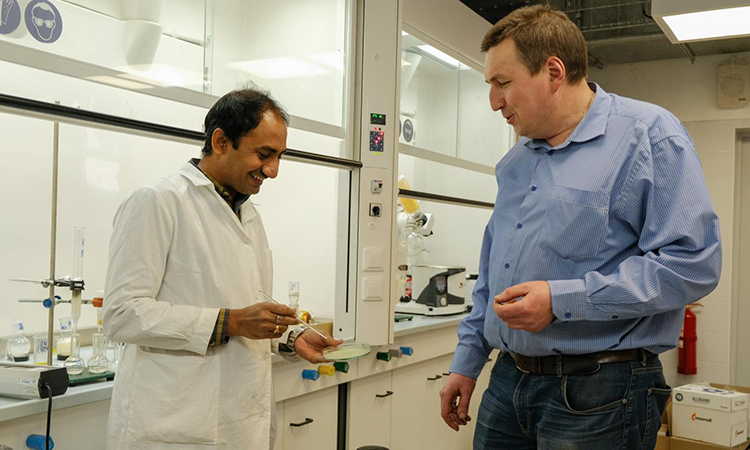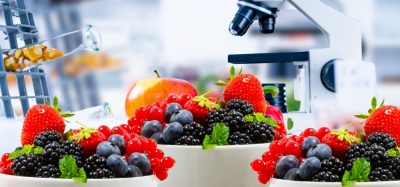Scientists create edible food packaging films from seaweed
- Like
- Digg
- Del
- Tumblr
- VKontakte
- Buffer
- Love This
- Odnoklassniki
- Meneame
- Blogger
- Amazon
- Yahoo Mail
- Gmail
- AOL
- Newsvine
- HackerNews
- Evernote
- MySpace
- Mail.ru
- Viadeo
- Line
- Comments
- Yummly
- SMS
- Viber
- Telegram
- Subscribe
- Skype
- Facebook Messenger
- Kakao
- LiveJournal
- Yammer
- Edgar
- Fintel
- Mix
- Instapaper
- Copy Link
Posted: 23 March 2021 | Joshua Minchin (New Food) | No comments yet
The research team says the films can be made using algae, of which there is an almost inexhaustible supply in the world’s oceans.


Rammohan Aluru and Grigoriy Zyryanov helped develop the edible films Credit: UrFU / Andrey Fomin
An international group of scientists from India and Russia has created edible food films for packaging fruits, vegetables, poultry, meat and seafood. The films consist of natural ingredients and the research team behind them says they are safe for consumer health and the environment. In a study published in the Journal of Food Engineering, the researchers claim the films are water-soluble and dissolve by almost 90 percent in 24 hours.
“We have created three types of food films based on the well-known naturally occurring seaweed biopolymer sodium alginate,” said Rammohan Aluru, senior researcher from the Organic Synthesis laboratory at Ural Federal University and co-author of the paper.
“Its molecules have film-forming properties. Sodium alginate is an auspicious carbohydrate macromolecule that has potential film-forming properties upon hydrolysis and abundantly exists in cell walls as a mixture of various salts. The greatest advantage of sodium alginate is that it performs as liquid-gel in an aqueous medium.”
Alginate molecules were cross linked with a natural antioxidant ferulic acid, which the research team says makes the film not only strong, but also homogeneous, more rigid, and prolongs the life of the products.
“Food stays fresh longer due to the antioxidant components that slow down the oxidation processes,” said Grigory Zyryanov, professor of the Department of Organic and Biomolecular Chemistry at Ural Federal University.
“In addition, we can add to the film’s natural antiviral agents by adding things like garlic, turmeric and ginger, which contain certain compounds that may prevent the spread of the viruses.”
According to the authors, no special equipment is required to produce the films on an industrial scale.
“It can also be produced at a polymer production plant. The only condition is that it must meet the standards that apply to food production. If an inexhaustible source of algae is nearby (ie, the ocean), then it will be quite simple to create such films,” said Grigory Zyryanov.
Related topics
Equipment, Food Safety, Packaging & Labelling, Research & development, Sustainability, Technology & Innovation









